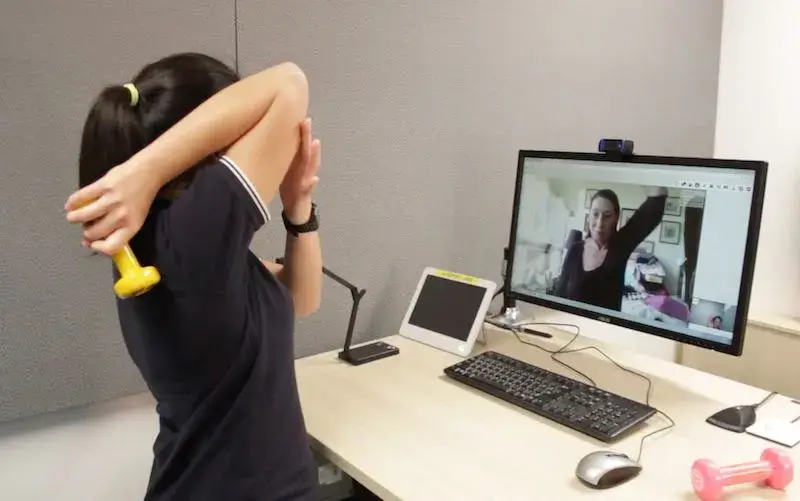Telerehabilitation, also known as e-rehabilitation, is the delivery of rehabilitation services over telecommunication networks and the internet. Telerehabilitation allows patients to interact with providers wherever they find themselves and can be used both to assess patients and to deliver therapy.
What is Telehealth?
Telehealth is a broader term that refers to the delivery of healthcare services over telecommunication networks. Telehealth includes telerehabilitation, but it can also include other services such as telemonitoring, telesurgery, and telepsychiatry.
How does Telerehabilitation work?
Telerehabilitation can use a variety of technologies, including videoconferencing, email, apps, web-based communication, and wearable technology. The specific technology used will depend on the needs of the patient and the provider.
In a typical telerehabilitation session, the patient and provider will connect using videoconferencing software like google meet. The provider(physical therapist) will then assess the patient’s condition and develop a treatment plan. The patient will then complete the exercises or therapy prescribed by the physical therapist. The physical therapist may also monitor the patient’s progress using wearable technology or other remote monitoring devices and their documented history.
Advantages of Telerehabilitation
There are many advantages to telerehabilitation. They include:
Increased access to care: Telerehabilitation can make rehabilitation services more accessible to people who live in rural areas or who have difficulty traveling to traditional rehabilitation facilities.
Reduced travel time and costs: Telerehabilitation can save patients time and money by eliminating the need to travel to and from traditional rehabilitation facilities. This is helpful in a city like Manila with all the traffic most days of the week.
Improved convenience: Telerehabilitation can be done from the comfort of the patient’s home, which can make it more convenient for patients to participate in therapy.
Increased patient satisfaction: Studies have shown that patients are often more satisfied with telerehabilitation than with traditional rehabilitation.
Conclusion
Telerehabilitation is a growing field that offers many advantages for patients. However, there are also some disadvantages to consider. If you are considering telerehabilitation, it is important to talk to your doctor to see if it is right for you.
If you would like to know the difference between physiotheraphy and physical therapy, please read this article it gives readers an insight about the field
image source:https://shrs.uq.edu.au/




